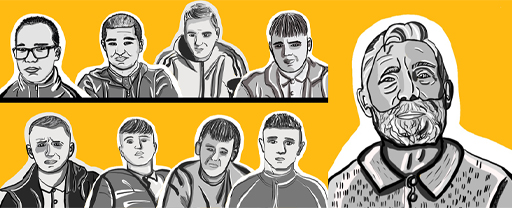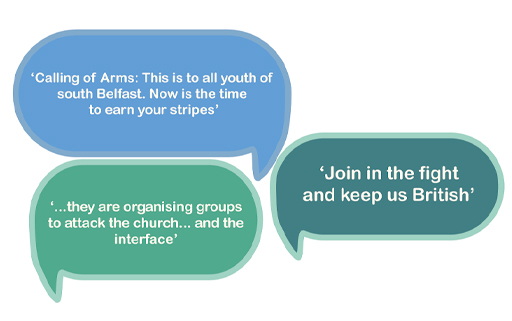2.1 Social media influence and the riots
Earlier you were introduced to the riots that took place in PUL areas in Belfast and other cities in Northern Ireland in the Spring of 2021. These riots and street disturbances also spread to interface or boundary areas between Catholic/Nationalist/Republican (CNR) and Protestant/Unionist/Loyalist (PUL) communities, where tensions were already high. In the aftermath of the riots, commentators, community workers, and young people themselves describe social media as playing a significant role. So what information sources were young people relying on when making decisions about whether to join the disturbances and how might this have influenced their choices?
Take a moment to read some of the comments below on social media in the build-up to the Belfast riots in 2021, targeting young people in areas like the Shankill.
And here are some reflections from the young people involved in this course on what was happening on social media.

‘People were making all sorts of fake accounts just to get people out. Grown men saying like “Oh we want everyone around here at such a time.” As soon as it happens, everyone just goes out [on the streets]’.
‘the kids are hearing stuff that’s 99% through social media, which isn’t always accurate. And they are led to believe different stories, which doesn’t really represent what this community is about’.
Activity 5: Responding to a call to action
How would you decide what to do if faced with a call to action on social media around an issue facing you or your community?
Sometimes in the heat of the moment it can be hard to see clearly what is happening, especially if you are feeling angry or upset. And as the boys also highlighted, sometimes things are not always what they seem. It may be that other people have their own agenda and reasons for wanting you to act in a certain way or to influence your actions.
Thinking critically is a powerful tool you can use to help you question information, weigh up and evaluate the quality of any information and make your own decisions based on this. Let’s start with ways of questioning the information you receive.

